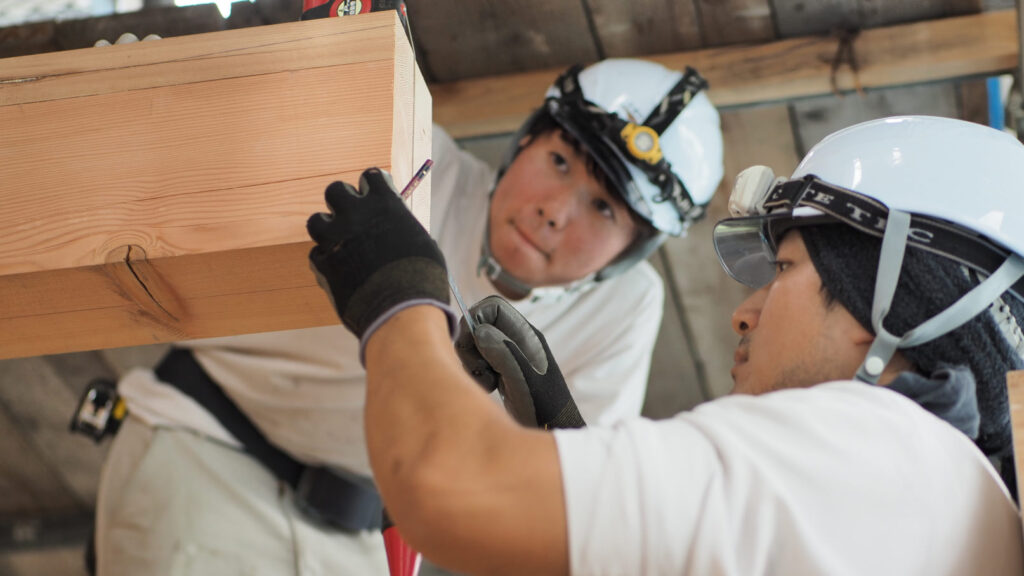Miyadaiku are carpenters who handle the construction and repair of traditional architecture such as shrines and temples. The name Miyadaiku comes from the fact that shrines and temples were originally pronounced “Omiya-san.”
What is “miyadaiku”?

Miyadaiku are specialists in the construction, repair, and restoration of shrine and temple architecture, and are responsible for the traditional architecture that is part of Japanese culture.
The Nihon Shoki, written in the Nara period, contains a passage that reads, “Use cedar for boats, and cypress for palaces,” and Japanese culture has been said to be a culture of wood. Japanese people have a history of making everything, including everyday items, using wood, a material that is available anywhere. The largest of these is wooden architecture, and the shape of the architecture itself and the techniques for building it have evolved to the present day in Japan’s unique climate and environment, which is harsh for wood, including earthquakes, typhoons, long periods of rain, and termites.
And shrine and temple architecture, which are proof of faith, have been carefully protected by the hands of Miyadaiku.
- Create design drawings and estimates based on the request
- Draw a “full-scale drawing” of the roof curves based on the design drawings
- Create templates for each component from the full-scale drawing
- Procure wood (select wood based on templates for components with large curves)
- Create each component by processing and carving the wood (using saws, chisels, planes, etc.)
- Make a mock-assembly in the workshop so that each component fits together
- Dismantle the mock-assembly and transport it to the building site
- Assemble on-site
- Give instructions to craftsmen other than carpenters (tile makers, plasterers, stonemasons, fittings, etc.) and lead the team until completion
The mission of Shokodo’s miyadaiku

- Work that is filled with prayer
- Work that connects history
- Work that brings the past to life
- Work that depicts emotions
